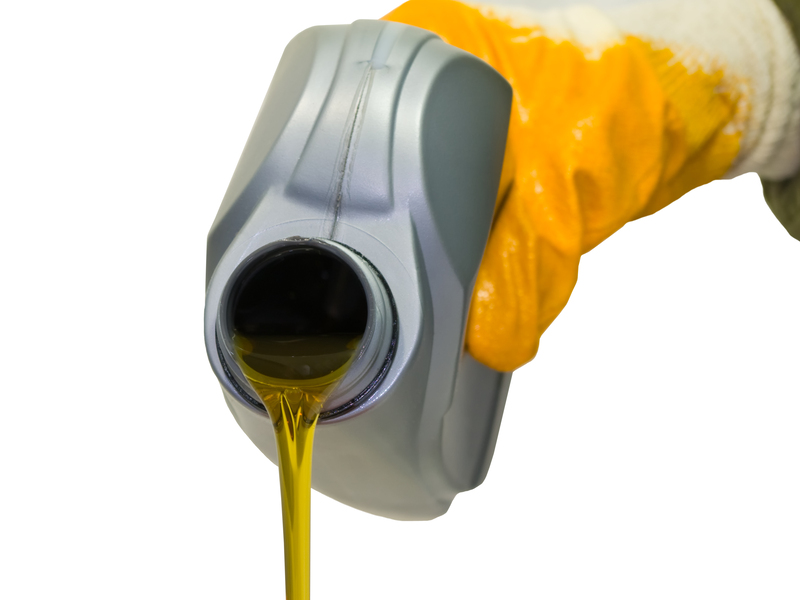Avoiding Unsafe Plastics: A Step Towards Sustainable Living
Posted on 21/08/2025
Avoiding Unsafe Plastics: A Step Towards Sustainable Living
Plastics are everywhere in our modern lives, from packaging and bottles to our furniture and electronics. But not all plastics are created equal. Some pose health risks and cause long-term damage to our environment. By making conscious choices to avoid unsafe plastics, we can take significant steps toward a more sustainable and healthier future for both ourselves and our planet.
Understanding Unsafe Plastics and Their Impact
Plastic is a synthetic material made from polymers that allow it to be molded and shaped as required. While plastic's versatility has made it indispensable, certain plastics contain hazardous chemicals that pose risks to human health and the environment.
In a sustainable living framework, discerning which plastics are unsafe is the crucial first step towards reducing our plastic footprint and encouraging responsible consumption.
Types of Unsafe Plastics: Know the Codes
Plastics are generally marked with a resin identification code--a number found inside the recycling symbol--and each type has different properties, risks, and recycling practices. Here are the main categories to be especially cautious about:
- Plastic #3: PVC (Polyvinyl Chloride) - Often used in pipes, toys, and cling wraps, PVC contains harmful additives like phthalates and BPA. These chemicals can leach into food and water, raising health concerns.
- Plastic #6: PS (Polystyrene) - Commonly known as Styrofoam, this material is used in disposable coffee cups, take-out food containers, and packing material. Polystyrene can release styrene--a potential carcinogen--particularly when heated.
- Plastic #7: Other (Includes Polycarbonate and BPA Plastics) - This category includes various plastics, among them polycarbonates, which contain Bisphenol-A (BPA). BPA can disrupt human hormones and has been linked to numerous health issues.
Health Risks Tied to Unsafe Plastics
Exposure to unsafe plastics can lead to serious health concerns:
- Endocrine disruption: Chemicals like BPA and phthalates interfere with hormone systems.
- Carcinogenic effects: Long-term exposure to compounds such as styrene is linked to cancer.
- Developmental problems: Children and pregnant women are especially susceptible to harmful plastic chemicals, risking developmental and reproductive harm.
- Other risks: Allergies, neurological disorders, and negative effects on immunity.
Environmental Impacts of Unsafe Plastics
The dangers of unsafe plastics extend well beyond personal health.
Plastics persist in the environment for hundreds of years, often breaking down into microplastics that pollute soil, rivers, and oceans. These particles can enter the food chain, harming marine life, wildlife, and eventually, humans.
- Ugly litter: Single-use plastics make up a vast portion of global litter.
- Wildlife endangerment: Animals ingest pieces of plastic or become entangled, leading to injury and death.
- Landfill overcrowding: Plastics take up an enormous amount of landfill space and do not biodegrade easily.
- Greenhouse gases: Breaking down or incinerating certain plastics releases toxic compounds and greenhouse gases.

How to Identify and Avoid Unsafe Plastics
Taking steps towards avoiding unsafe plastics requires increased awareness and proactive behaviors in daily life. Here are some practical tips to help you limit your exposure to harmful plastics and contribute to sustainable living:
1. Learn the Plastic Codes
Check the recycling code on the bottom of a product. In general:
- Avoid plastics with codes 3, 6, and 7, which often contain hazardous chemicals.
- Safer alternatives include codes 1 (PETE), 2 (HDPE), 4 (LDPE), and 5 (PP), but always use them as recommended--often for single use.
2. Choose Alternatives to Unsafe Plastics
Reducing reliance on harmful plastics is easier than you might think--plenty of alternatives exist:
- Glass and stainless steel: Excellent choices for food and beverage storage; they are durable, reusable, and free from toxic chemicals.
- Bamboo, wood, or metal: Use these materials for kitchen tools, plates, and cutlery instead of plastic versions.
- Silicone: A versatile, non-toxic material for baking sheets, storage bags, and bottles.
- Compostable plant-based plastics (PLA): If you must use disposable products, choose certified compostable ones made from cornstarch or sugarcane.
3. Rethink How You Shop
- Bring your own bags: Opt for cloth or canvas totes instead of single-use plastic bags.
- Buy in bulk: This minimizes packaging and allows use of your own refillable containers.
- Choose items with minimal or eco-friendly packaging: Encourage brands that reduce plastic in their supply chain.
4. Be Mindful of Food Storage
- Never microwave food in plastic containers, particularly if they are disposable or not rated "microwave safe."
- Store leftovers in glass or stainless steel: This avoids the risk of leaching chemicals.
- Avoid plastic wrap: Cover bowls with plates or use silicone lids or beeswax wraps.
5. Take Responsibility for Your Waste
- Recycle responsibly: Follow local guidelines and ensure plastics are clean and sorted.
- Support extended producer responsibility: Favor companies participating in plastic take-back programs or using recycled materials.
- Educate others: Promote community cleanups and plastic reduction initiatives.
Why Avoiding Unsafe Plastics Is Central to Sustainable Living
Sustainable living demands that we reduce our impact on the environment and protect our health. Choosing to avoid unsafe plastics is a meaningful part of this commitment.
- Minimizes waste: Reducing use of unsafe and single-use plastics lessens landfill and marine pollution.
- Protects health: Steering clear of toxic chemicals supports the well-being of yourself and your family.
- Promotes ethical consumption: Being mindful about products, packaging, and companies you support encourages safer and more responsible production practices.
- Champions circular economy principles: Prioritizing reusable and recyclable materials helps close the resource loop, saving energy and resources in the long run.
Common Unsafe Plastics in Daily Life: Where to Watch Out
Unsafe plastics crop up in the most unexpected places. Here's where you are likely to encounter them:
- Food packaging: Cling film, fast food containers, and disposable utensils.
- Beverage bottles and containers: Many single-use bottles and lids contain questionable plastics.
- Children's toys: Some toys are made from soft PVC and contain dangerous additives.
- Personal care products: Containers, applicators, microbead exfoliants.
- Household goods: Furniture upholstery, shower curtains, and other flexible items.
What the Science Says: Research on Unsafe Plastics
Multiple studies underline the relationship between unsafe plastics and adverse health effects. For example, research links phthalates and BPA with hormone imbalances, infertility, and certain cancers.
Indeed, an increasing number of countries and organizations are banning or restricting hazardous plastics, especially in products meant for babies and young children.
Are "BPA-Free" Plastics Safer?
In response to mounting health concerns, many products are now labeled as "BPA-Free". While this is a positive step, not all alternatives are risk-free. Some BPA substitutes, like BPF and BPS, may exhibit similar health risks.
Tip: When possible, choose non-plastic alternatives for items with prolonged food or drink contact.
Tips for Living with Less Unsafe Plastic
- Carry a reusable water bottle and coffee cup --avoid bottled drinks and disposable cups.
- Replace plastic food containers with glass, steel, or silicone ones.
- Buy fresh produce instead of pre-packaged goods whenever possible.
- Switch to bar soaps and shampoos to cut down on plastic bottles.
- Say no to plastic straws, cutlery, and plates--carry your own set made from bamboo, glass, or metal.
- Spread the word--educate friends and community members about the risks of unsafe plastics.
Eco-Friendly Innovations Replacing Unsafe Plastics
As awareness grows, so too do innovations in sustainable materials. Companies and research institutes are developing new materials that offer the functionality of plastic--without its health and environmental drawbacks. Some exciting developments include:
- Biodegradable plastics: Made from corn starch, sugarcane, or algae and decompose more easily than petrochemical plastics.
- Edible packaging: Literally eats the waste problem--packaging made from seaweed or rice you can eat or compost.
- Recycled ocean plastics: Collecting plastic debris from the ocean and converting it into durable goods.
- Plastic alternatives for medical uses: Natural materials for syringes, packaging, and other healthcare items.
By supporting brands and products that invest in these solutions, consumers can help drive the market towards safer, greener alternatives.

Government and Community Action: Enabling Large-Scale Change
While individual actions matter, wider change requires education, regulation, and innovation. Many governments are imposing bans or heavy taxes on certain types of plastics (such as bags and microbeads). Local communities are organizing beach cleanups and repair cafes to reduce waste and foster sustainable habits.
What you can do:
- Lobby for change: Support bans on unsafe plastics or advocate for stricter safety standards.
- Community events: Organize or join local cleanups, workshops, and sustainability fairs.
- Educate: Share resources on plastic safety with your family, school, or workplace.
Conclusion: A Greener Future With Less Unsafe Plastic
Making the commitment to avoid unsafe plastics is one of the most effective steps you can take toward sustainable living. By being informed, choosing safer alternatives, and cultivating sustainable habits, anyone can reduce the risks associated with hazardous plastics.
Each decision to avoid unsafe plastics is a vote for a healthier planet and a safer future.
Begin today: review the plastics you use, make small swaps, and join the global movement towards a more sustainable, plastic-safe world.

